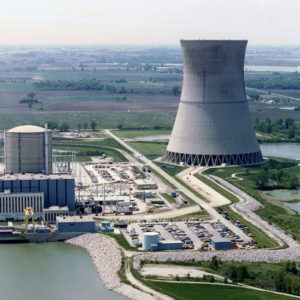President Obama, Hillary Clinton, John Kerry, labor unions, and a growing number of climate change advocates worldwide, including progressive heads of state, strongly support nuclear power. Today’s Democratic candidates for president, though, do not.
The candidates often talk about the existential crisis from climate change. But they are dismissive of nuclear power, which accounts for 55 percent of our non-carbon electricity. Wind and solar, meanwhile, still comprise less than 10 percent of the U.S. electricity supply.
It was not always this way.
In 2010, Obama bluntly said, “Nuclear energy remains our largest source of fuel that produces no carbon emissions. To meet our growing energy needs and prevent the worst consequences of climate change, we’ll need to increase our supply of nuclear power. It’s that simple.”
Obama later doubled down on nuclear power. In November 2015, the White House announced a series of steps to “ensure that nuclear energy remains a vibrant component of the United States’ clean energy strategy.”
In September 2016 Hillary Clinton told Scientific American, “Meeting the climate change challenge is too important to limit the tools available in this fight. Nuclear power, which accounts for more than 60 percent of our zero-carbon power generation today, is one of those tools.” Clinton also pledged to “increase investment in the research, development and deployment of advanced nuclear power.”
Today’s Democrats, at best, are silent on nuclear power.
Joe Biden, in his 10,000-word June 4 climate proposal does not even address the role of current nuclear power plants. He says, though, he will work to “identify the future of nuclear energy” and offers support for small modular reactors that are under development.
Bernie Sanders, who strongly criticized Hillary Clinton’s support for nuclear power in 2016, remains viscerally anti-nuclear even though he says on his campaign website, “Climate change is the single greatest threat facing our planet.”
Sanders was a driving force in closing Vermont’s only nuclear plant, much to the consternation of the Boston Globe editorial page, which admonished him for the consequences, saying, “Vermont’s greenhouse gas emissions have gone up more than the nation’s as a whole, putting the lie to its green self-image.”
Elizabeth Warren has been releasing her climate plan piecemeal and it remains to be seen where she stands. Governor John Hickenlooper’s 2,000-word climate position says, “Climate change is the defining challenge of our time.” He does not comment on nuclear power other than saying that he will promote scholarships and loan forgiveness for nuclear engineers.
Besides Obama and Clinton, Democrats should look to Canada’s global progressive prime minister, Justin Trudeau, regarding nuclear power. “The Canadian electricity sector — with low carbon emission nuclear generation and huge hydroelectric producers like HydroQuebec and B.C. Hydro — is one of the cleanest in the world,” Trudeau said in November.
Canada also has a master plan to reduce greenhouse gases drastically by 2050, with nuclear energy playing an important role. In fact, Canadians are already spending $25 billion to refurbish ten nuclear reactors, creating abundant, reliable, non-emitting power. America should model this success story.
For a cautionary tale, Democrats and the rest of us should be wary of losing nuclear plants as Germany has. In a November 2018 analysis, Michael Shellenberger, a Time magazine “Hero of the Environment,” found, “Despite having spent $580 billion on renewables like solar and wind, German emissions have remained unchanged since 2009, thanks to its abandonment of nuclear power.”
Back home, Democratic governors have supported plans to keep nuclear plants open in New York, New Jersey and Connecticut through plans that provide modest subsidies. By contrast, renewable energy subsidies are often quite enormous. New Jersey’s solar subsidies, for example, are 18 to 28 times its nuclear subsidies.
Even Green New Deal-architect Congresswoman Alexandria Ocasio-Cortez seems to be coming around on nuclear power. In a May interview she said, “I don’t take a strong anti- or pro-position on it,” and that she will “leave the door open on nuclear so that we can have that conversation.”
And it is a conversation America must have. A vibrant nuclear power industry not only means a cleaner environment, it means hundreds of thousands of middle-class jobs. As other nations in the world build nuclear power, the United States has an opportunity to increase its exports in this sector.
Innovations in nuclear power are also making more extensive space travel possible, including a mission to Mars. The development of new smaller nuclear reactors holds promise for using nuclear power in more rural communities and at remote military bases where fuel convoys are often susceptible to attacks.
Given all this, today’s Democratic candidates for president should clearly and firmly embrace the current and potential future uses of nuclear power. Like Obama and Clinton, they should be unabashedly pro-nuclear.

